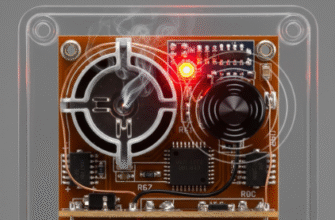Ouch! That familiar sting, throb, or ache – nobody enjoys pain. Whether it’s the sharp shock of a paper cut or the dull insistence of a headache, pain is a universal human experience. It’s unpleasant, disruptive, and something we instinctively try to avoid or stop. But have you ever paused to consider why we feel it? Far from being just a nuisance, pain is actually one of your body’s most sophisticated and essential survival mechanisms. It’s a built-in alarm system, constantly monitoring for trouble and alerting you when action is needed.
Think of it like the warning lights on your car’s dashboard. The oil light isn’t the problem itself; it’s a signal telling you the engine needs attention before serious damage occurs. Pain works similarly. It grabs your focus, forces you to react, and often protects you from causing further harm or allows an existing injury the chance to heal.
The Journey of a Pain Signal
So, how does this internal alarm actually work? It’s a complex biological process involving specialized nerves, your spinal cord, and ultimately, your brain. It all starts at the site of potential or actual tissue damage.
Scattered throughout your body – in your skin, muscles, joints, and organs – are millions of specialized nerve endings called nociceptors. These aren’t just any nerve endings; they are specifically tuned to detect stimuli that could be harmful. Think intense heat, damaging pressure, cuts, or certain chemicals released by injured cells. When these nociceptors detect such a threat, they activate.
Once activated, the nociceptors generate electrical signals. These signals don’t just stay put; they travel lightning-fast along nerve fibers, like data zipping through cables. These fibers act as highways leading towards your central nervous system – specifically, your spinal cord.
The spinal cord acts as a crucial relay station. Here, the incoming pain signals are processed and often trigger immediate reflexes even before your brain is fully aware. Ever snatch your hand away from a scorching stove plate before you consciously registered the heat? That’s your spinal cord reflex arc in action, protecting you instantly. The signal is also relayed upwards, continuing its journey towards the brain.
The Brain: Where Signal Becomes Sensation
The final destination for these signals is the brain, the master control center. But the brain doesn’t just passively receive the message; it actively interprets it. Several brain regions work together to process the incoming signals, considering various factors:
- Location: Where is the signal coming from? Is it your hand, your foot, your back?
- Intensity: How strong is the signal? Is it a minor irritation or severe agony?
- Type: What kind of sensation is it? Sharp, dull, burning, throbbing?
- Context: What else is happening? Are you in a dangerous situation? Are you expecting pain?
It’s this interpretation within the brain that transforms the raw electrical signals into the conscious experience we call pain. This process also links the sensation to emotions (fear, anxiety, annoyance) and memories (previous painful experiences), shaping our overall reaction. This is why the same physical stimulus might feel different depending on your mood or the situation.
Pain: The Great Protector
The primary function of this intricate system is protection. Acute pain – the sudden kind that follows an injury like a cut, burn, or sprain – serves several vital purposes:
1. Immediate Warning: It alerts you to danger, prompting you to withdraw from the harmful stimulus. Touching that hot stove? Pain makes you pull back instantly, preventing a more severe burn. Stepping on a sharp object? Pain makes you lift your foot, minimizing tissue damage.
2. Enforced Rest: If you’ve sprained your ankle, the pain makes walking difficult and uncomfortable. This encourages you to rest the injured joint, preventing further strain and allowing ligaments time to heal. Pain essentially immobilizes the injured part, creating the necessary conditions for recovery.
3. Learning Mechanism: Painful experiences teach us to avoid potentially harmful situations in the future. A child who touches a hot radiator learns quickly not to do it again. This learned avoidance is crucial for navigating the world safely.
Pain is fundamentally a protective mechanism. It signals that something is wrong within the body, demanding attention. This system prompts reflex actions to avoid immediate danger and encourages behaviors, like resting an injured limb, that facilitate healing. Understanding this helps us appreciate pain not just as suffering, but as a vital component of our survival toolkit.
When the Alarm Goes Wrong
While acute pain is a helpful, temporary signal, sometimes the pain system malfunctions or doesn’t switch off as it should. This can lead to chronic pain – pain that persists for weeks, months, or even years, long after the initial injury has healed or sometimes without any apparent initial injury at all. Chronic pain serves no useful protective purpose; it’s like a car alarm stuck blaring long after the threat is gone. It can be debilitating, affecting mood, sleep, work, and overall quality of life.
There’s also neuropathic pain, which arises from damage or dysfunction within the nervous system itself. Instead of nociceptors detecting tissue damage, the nerves themselves are sending faulty pain signals. This can result in unusual sensations like burning, tingling, numbness, or shooting pains, often without any obvious external cause.
More Than Just Physical: The Emotional Dimension
Pain isn’t purely a physical sensation; it has powerful emotional and psychological components. How we feel emotionally can significantly influence how we perceive pain. Anxiety, fear, and depression can often amplify the sensation of pain, making it feel worse. Conversely, positive emotions, distraction, and a sense of control can sometimes lessen its perceived intensity.
Think about stubbing your toe. If you’re already stressed and late for work, the pain might feel unbearable and infuriating. If you’re relaxed and watching a funny movie, you might still feel the pain, but it may seem less intense or bothersome because your focus is elsewhere.
Past experiences also play a role. Someone who has had a traumatic injury might be more sensitive to or fearful of pain in the future. Our beliefs about pain – whether we see it as a sign of weakness or a manageable challenge – also shape our experience.
Factors Influencing Pain Perception
- Attention: Focusing on the pain tends to make it feel worse. Distraction can reduce its perceived intensity.
- Expectation: Expecting something to hurt can actually make it hurt more (the “nocebo” effect). Believing a treatment will help can reduce pain (the “placebo” effect).
- Mood: As mentioned, anxiety and depression often increase pain perception, while relaxation can decrease it.
- Culture and Social Learning: How we learn to express and respond to pain can be influenced by our upbringing and cultural norms.
- Genetics: Subtle genetic differences can affect an individual’s sensitivity to pain and how their nervous system processes pain signals.
Persistent or unexplained pain should never be ignored. While acute pain is a helpful warning, chronic pain or pain that doesn’t have a clear cause might indicate an underlying issue needing attention. Think of it as a continuous alert from your body; consult a healthcare professional to understand the message rather than just trying to silence the alarm indefinitely. Proper evaluation is key.
An Unpleasant Necessity
In conclusion, feeling pain is an intrinsic part of being alive, deeply woven into our biology for the purpose of survival. It’s a sophisticated, multi-layered system involving specialized sensors, rapid communication lines, and complex brain interpretation. While we naturally dislike the sensation, it acts as an indispensable guardian, alerting us to danger, enforcing rest for healing, and teaching us caution.
From the immediate reflex withdrawal from heat to the way pain encourages us to protect an injury, it’s clear that this system, however unpleasant, is vital. Understanding the ‘why’ behind pain doesn’t make it disappear, but it can shift our perspective. Instead of viewing it solely as an enemy, we can recognize it as a fundamental, albeit sometimes faulty, messenger working constantly to keep us safe and allow our bodies to recover from harm. It’s the price we pay for a body that can sense, react to, and ultimately protect itself from the world around it.
“`






